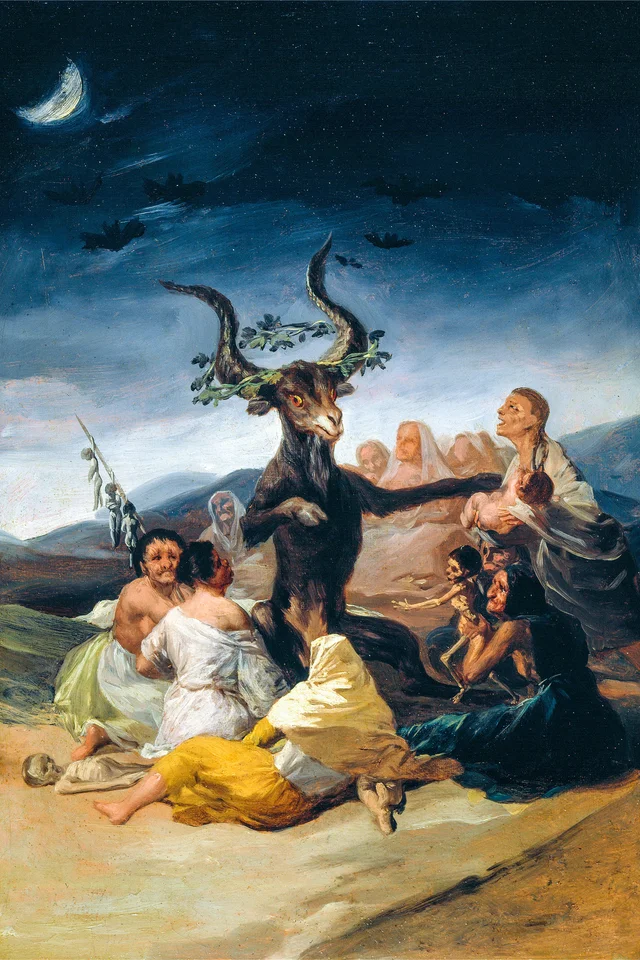Revolutionary psychedelic music
«There is much new to be created, and I feel this with tremendous energy.» Full of drive, Hector Berlioz began work on his ‹Symphonie fantastique› in early 1830. At the time, the young composer was struggling for recognition in the music world, having applied several times in vain for the prestigious Prix de Rome. And he was desperately seeking distraction from an unhappy love affair that had been gnawing at his heart for years.

Hector Berlioz processes his unhappy love for Harriet Smithson in his Symphonie fantastique. The five movements tell of longing, madness, and nightmares. With innovative instrumentation and the idée fixe as a leitmotif, Berlioz establishes the program music of Romanticism.
Ever since Hector Berlioz saw Irish actress Harriet Smithson perform as Ophelia in Shakespeare's drama Hamlet in Paris, he had been completely smitten with her. But his beloved ignored his advances. He watched her longingly from afar and sent her passionate messages – in vain. Finally, Smithson gave him a clear rejection and left France. With an autobiographical «fantastic» symphony, the rejected admirer then attempted to regain his emotional balance by transforming his «hellish passion» into music. It is no coincidence that the work is subtitled Episode from the Life of an Artist.
Berlioz, the son of a doctor, was born in 1803 at the foot of the French Alps. At his father's request, he first had to study medicine. In his early days as a composer, he suffered for a long time from financial dependence on his parents. With this symphony, now considered a milestone in Romantic music, he achieved a veritable liberation. The work, which tells a story in five movements, paved the way for program music as an independent genre. Berlioz wrote a detailed description of each movement in order to convey to the audience all facets of what he called his «instrumental drama».
A sensitive young man pines for an unattainable dream woman (Rêveries, Passions). He meets her again at a dance, where she ignores him (Un Bal), whereupon he searches in vain for inner peace in the countryside (Scène aux champs). Addicted to opium, he is tormented by dark hallucinations – he believes he has murdered his beloved and is being led to the scaffold (Marche au supplice). The symphony ends in a wild witches' sabbath (Songe d'une nuit du Sabbat), where the former object of his desire appears as a shrill, menacing figure. Berlioz combines the witches' dance with the ringing of bells and a parody of the Dies Irae from the Latin requiem mass, which deals with the Last Judgment.
In the artist's imagination, the beloved always appears in connection with a musical leitmotif – the so-called idée fixe, which runs through all five movements. Carl Maria von Weber had already implemented this principle in his operas. However, Berlioz attracted even greater attention with this technique – his idée fixe influenced important composers such as Franz Liszt and Richard Wagner. At the witches' sabbath, where ghosts, wizards, and monsters gather for the protagonist's funeral, the previously lovely leitmotif is first distorted grotesquely by the piercing E-flat clarinet and then by the entire orchestra.
Berlioz also made his mark with his instrumentation. He used divisi playing by the strings, in which polyphonic passages are distributed among different musicians, to create sound effects that were novel for the time. And, as in musical theater, music was also played behind the scenes. This could later be observed in composers such as Gustav Mahler, who used distant instruments in his symphonies.
One of Berlioz's great role models was Beethoven, whose Sixth Symphony, nicknamed Pastorale, stimulated his imagination. The Scène aux champs begins with a peaceful dialogue between two shepherds, played by the English horn and oboe. When the idée fixe suddenly intrudes on this bucolic idyll, the mood shifts. Unrest arises, thunder rumbles, and dark clouds gather in the artist's soul. Berlioz draws on other sources as well. The last movement is inspired by the witches' sabbath in Walpurgis Night from Goethe's Faust. Berlioz was fascinated by this tragedy, which his friend Gérard de Nerval had translated into French. In 1829, he wrote his Huit scènes de Faust. Thomas de Quincey's Confessions of an English Opium-Eater, which had recently been translated by Alfred de Musset, also clearly left its mark on the Symphonie fantastique.
On December 5, 1830, the groundbreaking symphony was premiered under the baton of François-Antoine Habeneck. Prior to this, Berlioz had finally won the coveted Prix de Rome with his cantata La Mort de Sardanapale. The audience at the Paris Conservatory responded with thunderous applause that evening. The next day, Berlioz wrote to his father that the audience had stamped their feet and demanded an encore. The newspaper Le Figaro paid him tribute: «Monsieur Berlioz has kept his word: his Symphonie fantastique is a veritable musical novel. This composition is the most bizarre monstrosity imaginable». Other critics were less benevolent – the Belgian composer François-Joseph Fétis, for example, accused him of disregarding the rules.
Harriet Smithson was not present at the premiere. Nevertheless, Berlioz's unhappy love story had a happy ending. In 1832, the actress accepted an invitation to a performance of the symphony – and was finally moved by the feelings of her persistent admirer. A year later, the two celebrated their wedding. One of the witnesses was Berlioz's friend Franz Liszt. In the same year, he created a piano transcription of the Symphonie fantastique. While the symphony continued to accompany its composer through his life, his marriage to Smithson fell apart.
Author: Corina Kolbe
